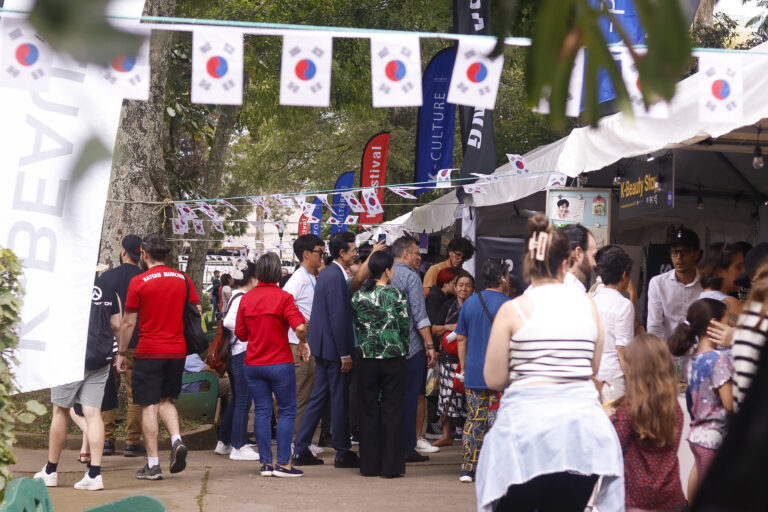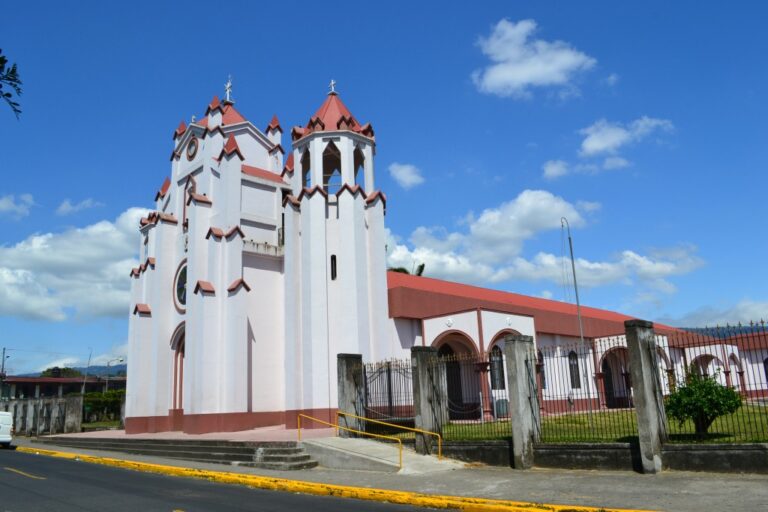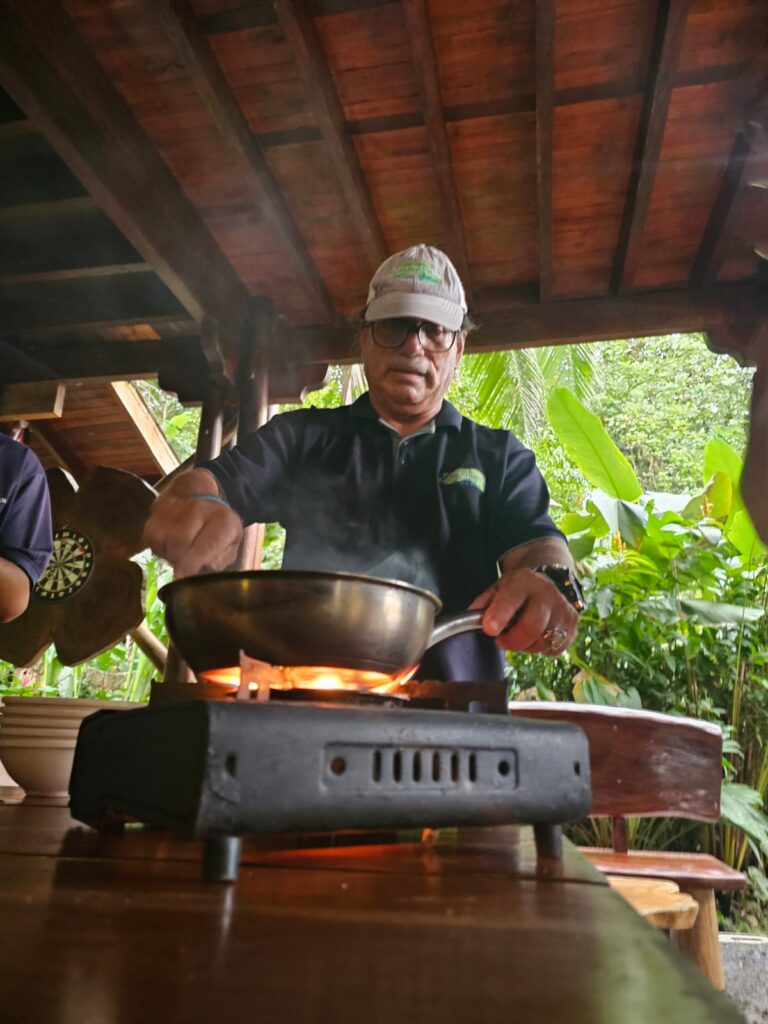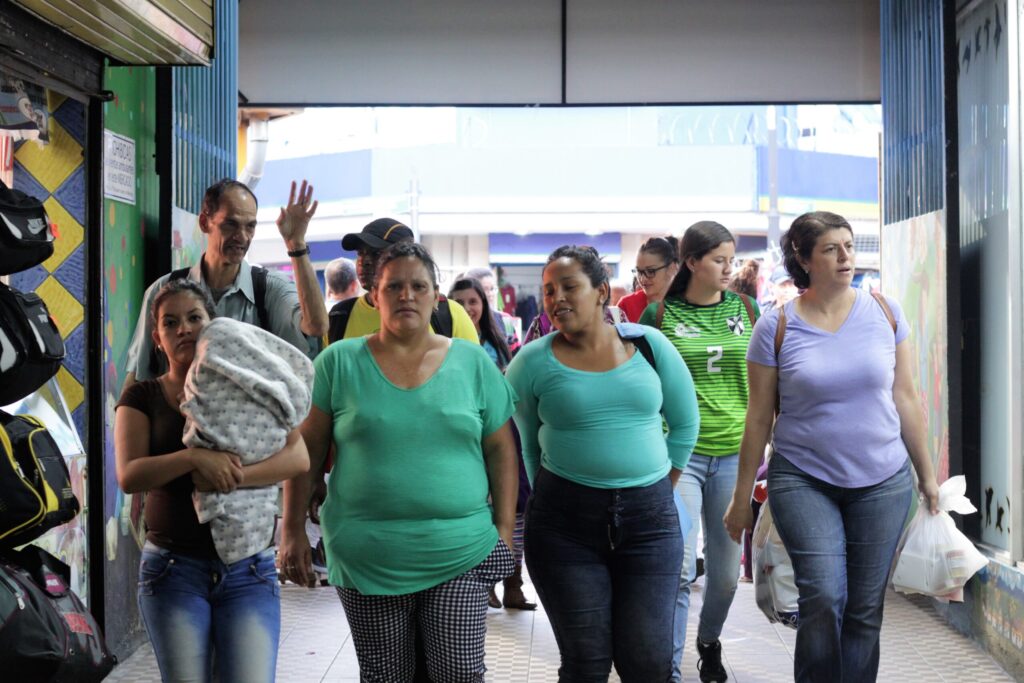The Annexation of Guanacaste is one of the most significant historical events in Costa Rica’s history, representing the voluntary integration of a region that, at the time, belonged to Nicaragua. This annexation, formalized on July 25, 1824, marked a turning point in the country’s territorial, economic, and cultural configuration. The motto “From the homeland by our will” reflects the desire of the people of Guanacaste to join Costa Rica, highlighting the democratic and peaceful nature of this process.
In the context of Central American history, the Annexation of Guanacaste occurred during a tumultuous period marked by the dissolution of the Captaincy General of Guatemala and the formation of new independent republics. After gaining independence from Spain in 1821, Central American territories faced significant political and economic challenges as they sought to define their borders and systems of government. In this scenario, the region of Guanacaste, composed of the towns of Nicoya, Santa Cruz, and Liberia, decided to annex itself to Costa Rica, motivated by economic, social, and political factors that we will analyze in depth.
This event not only redefined Costa Rica’s geographical borders but also enriched its cultural diversity and strengthened its national identity. Today, the Annexation of Guanacaste is celebrated annually on July 25, with festivities that reflect the region’s cultural heritage and its importance in national history.
Through this blog, we will explore the historical context that led to the annexation, the key figures involved, and the lasting impact this event has had on Costa Rica. Join us on this journey to understand why the Annexation of Guanacaste remains a fundamental pillar in the construction of Costa Rican identity.
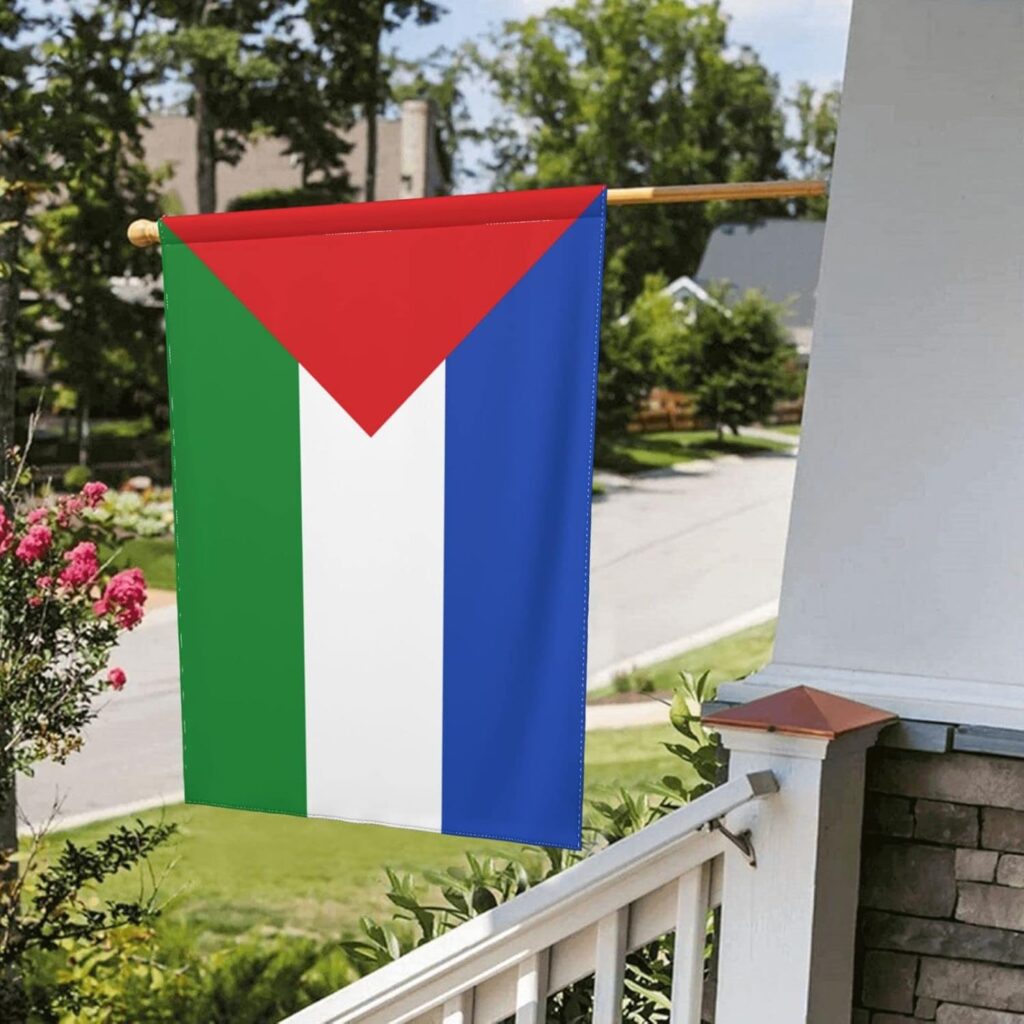
1. Historical Context
Central America’s Situation in the 19th Century
The 19th century was a period of significant changes and upheavals in Central America. After gaining independence from Spain in 1821, the territories that had formed the Captaincy General of Guatemala began seeking their own identity and autonomy, leading to considerable fragmentation and the creation of new republics.
Fragmentation of the Captaincy General of Guatemala
The Captaincy General of Guatemala, which included the present-day territories of Guatemala, El Salvador, Honduras, Nicaragua, and Costa Rica, underwent a process of dissolution after independence. The lack of a strong central government and economic and political differences between the provinces accelerated this fragmentation. In 1823, the United Provinces of Central America was established as a federation aimed at maintaining regional unity. However, internal tensions and a lack of cohesion led to the failure of this effort, ultimately resulting in the independence of the member countries.
War of Independence in Central America
The independence process in Central America was marked by conflicts and internal struggles. The war for independence was not only against Spanish rule but also involved internal factions vying to impose their own forms of government. The fragmentation of the Captaincy General of Guatemala exacerbated these tensions, leading to a series of armed conflicts and power struggles that characterized the region in the early decades of the 19th century.
Political and Social Landscape in Nicaragua and Costa Rica at the Time
During this period, both Nicaragua and Costa Rica were dealing with their own internal challenges. Nicaragua, being larger and more populated, was divided between the interests of León and Granada, two cities competing for political and economic control. This division contributed to instability and conflict, making it difficult to effectively administer peripheral territories like Guanacaste.
Costa Rica, on the other hand, had a smaller population and an economy primarily based on agriculture. Despite its relative stability, the country also faced challenges in consolidating its government and expanding its territorial influence. In this context, the region of Guanacaste, which was geographically closer to Costa Rica and shared economic and cultural interests with it, began to see annexation as an opportunity for a more stable and prosperous future.
The combination of these historical and political circumstances set the stage for Guanacaste’s decision to annex itself to Costa Rica, seeking mutual benefits in terms of stability and development. This context is essential to understand the importance and implications of the Annexation of Guanacaste, which we will analyze in detail in the following sections.
Guanacaste Before the Annexation
Population and Economy of Guanacaste
Before the annexation, Guanacaste was a region with distinctive characteristics in both its population and economy. The population of Guanacaste was primarily composed of indigenous and mestizo communities, with a strong presence of unique cultural traditions. Life in Guanacaste revolved around agricultural and livestock activities, which were the backbone of its economy.
The economy of Guanacaste was mainly based on agriculture, with the cultivation of maize, beans, and other staple crops essential for the sustenance of its inhabitants. Additionally, livestock played a crucial role in the region’s economic life, with large estates dedicated to cattle ranching. This livestock activity not only provided food but was also an important source of income through the trade of by-products such as leather and meat.
Relations with Nicaragua and Costa Rica
Politically and socially, Guanacaste had historical ties with both Nicaragua and Costa Rica. Initially, Guanacaste was part of the territory administered by the Captaincy General of Guatemala, and after independence, it was integrated into the province of Nicaragua within the United Provinces of Central America.
However, Guanacaste maintained closer relations with Costa Rica due to its geographical proximity and commercial exchanges between both regions. Natural trade routes and economic ties fostered a stronger connection with Costa Rica than with the rest of Nicaragua. Moreover, the differences in political and social structures between Guanacaste and the rest of Nicaragua contributed to a sense of disconnection from Nicaraguan authorities.
On the other hand, Costa Rica offered a more stable and less conflict-ridden model of government compared to Nicaragua’s situation, which was attractive to the people of Guanacaste. Costa Rica’s relative peace and political stability, along with its growing economic development, provided a more promising alternative for the people of Guanacaste.
This economic and social background, along with existing relationships and the aspirations of Guanacaste’s inhabitants, set the stage for the decision to annex themselves to Costa Rica. The choice of the towns of Nicoya, Santa Cruz, and Liberia to join Costa Rica reflected a desire to improve their economic and social well-being, seeking integration that promised greater opportunities and a more stable future.

The Annexation Process of the Partido de Nicoya
Reasons for the Annexation
The decision of the towns of Guanacaste to annex themselves to Costa Rica in 1824 was not taken lightly. This process was driven by a combination of economic, social, and political factors that made integration with Costa Rica a more attractive and viable option for the people of Guanacaste.
Economic Reasons
- Trade Exchange: Natural trade routes and geographical proximity favored greater economic interaction between Guanacaste and Costa Rica. Costa Rican markets provided a more stable and accessible outlet for Guanacaste’s agricultural and livestock products.
- Economic Stability: Compared to Nicaragua, which was mired in internal conflicts and power struggles, Costa Rica offered a more stable and promising economic environment. Costa Rica’s growing economy presented opportunities for Guanacaste’s development and prosperity.
- Infrastructure and Support: Costa Rica was in a position to provide greater support in terms of infrastructure and services to the Guanacaste region. Integration promised improvements in roads, security, and other logistical aspects crucial for trade and regional development.
Social Reasons
- Cultural Ties: Although Guanacaste was administratively part of Nicaragua, its cultural and social ties with Costa Rica were strong. Festivities, customs, and family connections between Guanacastecans and Costa Ricans facilitated a more natural and harmonious integration.
- Quality of Life: The perception of a better quality of life under Costa Rican administration also influenced the decision. The people of Guanacaste expected social benefits such as better education, healthcare services, and greater security.
Political Reasons
- Political Stability: Nicaragua was undergoing a period of political instability, with frequent conflicts between rival factions. In contrast, Costa Rica offered a more stable and less conflict-ridden government, which was appealing to a region seeking peace and prosperity.
- Local Autonomy: The towns of Nicoya, Santa Cruz, and Liberia saw annexation to Costa Rica as an opportunity to maintain a greater degree of autonomy and self-governance. Costa Rica had a more decentralized government structure that allowed local communities to have a more significant voice in managing their affairs.
2. Interests of the People of Guanacaste
The inhabitants of Guanacaste, mostly farmers and ranchers, had practical interests and clear aspirations that led them to choose annexation to Costa Rica. They sought an environment conducive to economic growth and social stability. Costa Rica’s promises to support regional development, respect local traditions, and offer a more efficient and just government were decisive factors.
The decision was made democratically and reflected the will of the people of Guanacaste to improve their situation under a government that offered them better opportunities and greater stability. This popular will was immortalized in the phrase “From the homeland by our will,” symbolizing the conscious and free choice of the Guanacastecans to become part of Costa Rica.
2.1 Formal Process of Annexation
Consultation and Decision of the Towns of Nicoya, Santa Cruz, and Liberia
The formal process of Guanacaste’s annexation began with consultations among the inhabitants of the region’s main towns: Nicoya, Santa Cruz, and Liberia. In a remarkable democratic exercise for the time, open town meetings (cabildos abiertos) were held, where the local population discussed and deliberated the advantages and disadvantages of joining Costa Rica.
These cabildos abiertos, or citizen assemblies, were fundamental to the process. In these gatherings, the inhabitants expressed their opinions and voted on the annexation proposal. The majority of the citizens from these towns expressed their desire to integrate with Costa Rica, motivated by the previously mentioned economic, social, and political reasons. This collective decision reflected a popular consensus that legitimized the annexation process.
Role of the Legislative Assembly of Costa Rica
Once the towns of Nicoya, Santa Cruz, and Liberia expressed their desire to join Costa Rica, the next step was to formalize this wish through institutional channels. The Legislative Assembly of Costa Rica, the governing body responsible for legislation, played a crucial role in this process.
The Legislative Assembly received the request for annexation from the towns of Guanacaste and proceeded to evaluate the feasibility and implications of this integration. Costa Rican legislators saw the annexation as an opportunity to expand the country’s territory and strengthen its economy and culture. After deliberations, the Legislative Assembly approved the annexation request, officially recognizing the will of the people of Guanacaste to join Costa Rica.
Decree of July 25, 1824
The annexation process culminated with the enactment of the Decree of July 25, 1824, a historic document that officially integrated Guanacaste into Costa Rica. This decree, issued by the Legislative Assembly of Costa Rica, established the terms of the annexation, ensuring the respect and protection of the rights of Guanacaste’s inhabitants.
The Decree of July 25, 1824, not only formalized the annexation but also laid the foundations for the administrative and legal integration of Guanacaste into Costa Rican territory. This historic document highlighted the voluntary nature of the annexation and the importance of preserving Guanacaste’s traditions and customs within the new national framework.
The promulgation of the decree was a moment of celebration for the people of Guanacaste, who saw this integration as an opportunity for a more prosperous and stable future. Since then, July 25 has been celebrated in Costa Rica as the Día de la Anexión del Partido de Nicoya (Annexation of the Party of Nicoya Day), a holiday that honors the voluntary decision of the Guanacaste people to join Costa Rica and serves as a symbol of unity and national pride.
2.2 Impact and Consequences
Immediate Consequences
The Annexation of Guanacaste had significant and immediate repercussions, both in the administration and territorial organization of Costa Rica and in diplomatic relations with Nicaragua and other Central American countries.
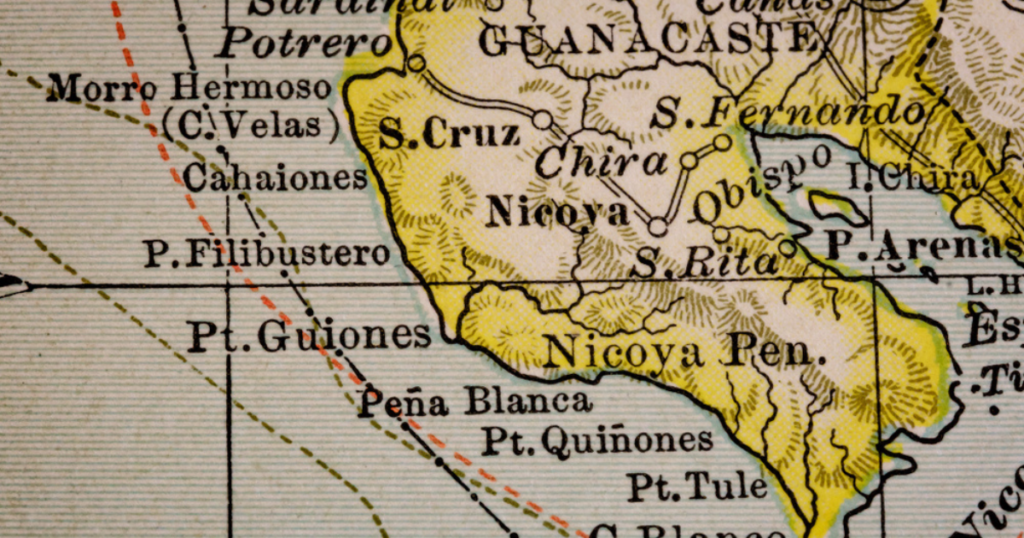
3. Changes in Administration and Territorial Organization
- Administrative Reorganization
- With the annexation, Costa Rica had to incorporate Guanacaste into its administrative structure. This involved creating new territorial divisions and appointing local authorities responsible for governing the region under Costa Rican law.
- District headquarters were established, and administrative systems were implemented to effectively integrate Guanacaste, ensuring that the region received the necessary services and support from the central government.
- Infrastructure Development
- The integration of Guanacaste spurred the construction and improvement of infrastructure, such as roads and bridges, to facilitate trade and communication between Guanacaste and the rest of Costa Rica.
- The Costa Rican government invested in improving living conditions in the region, promoting agricultural and livestock development projects that benefited local inhabitants.
Reactions in Nicaragua and Other Parts of Central America
- Reactions in Nicaragua
- The annexation of Guanacaste was met with discontent and concern in Nicaragua, as it represented a significant territorial and economic loss. Nicaraguan authorities saw the annexation as an affront to their sovereignty and a dangerous precedent for the stability of their borders.
- Over the years, Nicaragua lodged several diplomatic claims and formal protests with Costa Rica and international organizations, seeking to overturn the annexation. These diplomatic tensions persisted for decades, although they did not succeed in altering Guanacaste’s status.
- Reactions in Central America
- In other parts of Central America, the annexation was observed with both interest and concern. The fragmentation of the United Provinces of Central America and the redefinition of regional borders were sensitive issues, and the annexation of Guanacaste added an additional layer of complexity to the political landscape.
- However, the popular will expressed by the people of Guanacaste and Costa Rica’s diplomatic handling of the process helped mitigate some of the potential conflicts in the region. The annexation was seen by some as an example of self-determination and democracy during a period of uncertainty and change.
The immediate consequences of the Annexation of Guanacaste were largely positive for Costa Rica and the inhabitants of Guanacaste, though they also generated diplomatic tensions with Nicaragua and concerns in the region. The integration of Guanacaste strengthened Costa Rica both territorially and demographically, while Guanacaste found in Costa Rica an ally for its development and stability.
In the next section, we will explore the economic and cultural development of Guanacaste as part of Costa Rica and how this annexation has influenced the country’s identity and growth over time.
4. Economic and Cultural Development
4.1 Integration of Guanacaste into the Costa Rican Economy
The annexation of Guanacaste to Costa Rica in 1824 had a significant impact on the country’s economy, bringing new resources and opportunities that strengthened economic development both in the region and in the nation as a whole.
Agriculture and Livestock
Guanacaste, with its fertile land and favorable climate, became a key region for Costa Rica’s agricultural and livestock production. The cultivation of staple grains such as corn and beans, as well as cattle ranching, expanded significantly.
The integration of Guanacaste allowed Costa Rica to diversify its agricultural economy, contributing to greater economic stability. The region became an important supplier of food and livestock products for both the domestic market and export.
Infrastructure Development
The annexation drove the development of essential infrastructure such as roads, bridges, and irrigation systems, which facilitated the transport and commercialization of agricultural and livestock products. These infrastructural improvements also promoted tourism and commerce in the region.
Improved access to both national and international markets stimulated investment in the region and fostered sustainable economic growth.
Tourism
With its stunning landscapes, beaches, and national parks, Guanacaste became a premier tourist destination. The tourism industry in Guanacaste has grown exponentially, attracting visitors from all over the world and generating significant revenue for both the local and national economy.
Tourism has promoted job creation and incentivized the development of hotel and service infrastructure, contributing to the region’s economic well-being.
4.2 Cultural Influences and Guanacastecan Traditions in Costa Rica
The annexation of Guanacaste not only had an economic impact but also profoundly enriched Costa Rican culture by integrating traditions and customs that have become an essential part of national identity.
Festivities and Celebrations
Guanacastecan festivities, such as the Annexation of the Party of Nicoya Day (celebrated on July 25) and the Santa Cruz Festivities, have been integrated into Costa Rica’s national celebration calendar. These festivities highlight Guanacaste’s cultural heritage and promote national unity and pride.
During these celebrations, traditional activities such as the tope (horse parade), bullfighting events, and folk dances take place, attracting both locals and tourists while preserving the customs and traditions of the region.
Music and Dance
Guanacaste has contributed rich musical and dance traditions to Costa Rica. The punto guanacasteco, a traditional dance, and the marimba, an emblematic musical instrument, are examples of how Guanacaste’s cultural traditions have been integrated and popularized throughout the country.
These cultural expressions are not only part of festivities but are also taught in schools and showcased in cultural events nationwide, strengthening Costa Rican cultural identity.
Gastronomy
Guanacaste’s gastronomy has enriched Costa Rican cuisine with traditional dishes such as corn tortillas, gallo pinto, and tamales. Local ingredients and Guanacastecan culinary techniques have been incorporated into the daily diet of Costa Ricans.
The culinary influence of Guanacaste can be seen in the popularity of its traditional dishes in restaurants and households across the country, fostering a sense of unity and pride in shared traditions.
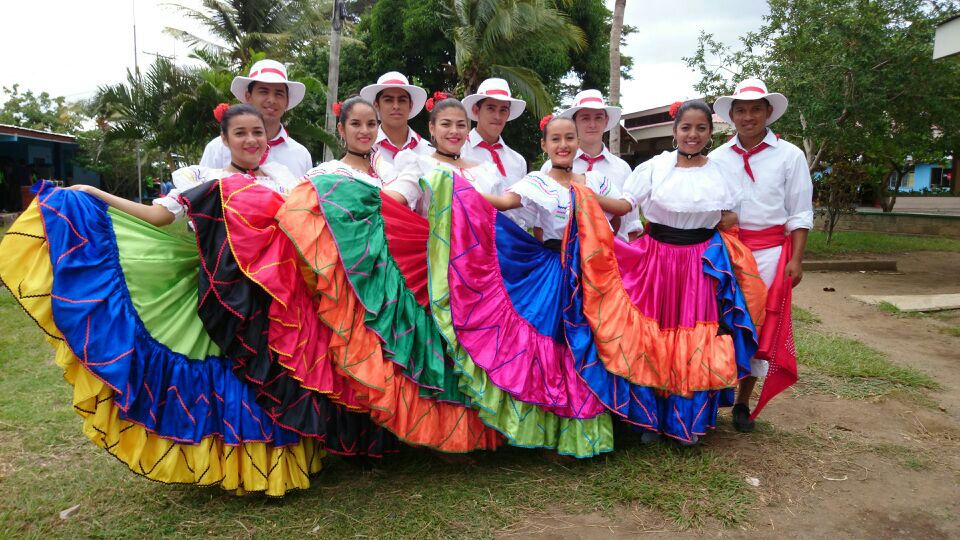
4.3 Some Historical Figures of Guanacaste
Key Figures
The Figure of Braulio Carrillo
His Role in the Consolidation of the Annexation
Braulio Carrillo Colina, known as one of the most influential leaders in the early history of Costa Rica, played a crucial role in consolidating the Annexation of Guanacaste. Carrillo served as President of Costa Rica on two occasions (1835-1837 and 1838-1842) and was recognized for his firm leadership and vision for the country.
Carrillo understood the strategic and economic importance of integrating Guanacaste into Costa Rica. He worked diligently to ensure that the annexation process was carried out peacefully and orderly. His leadership was fundamental in making the annexation not just an administrative act but an effective and beneficial integration for both parties.
Policies Toward Guanacaste
During Braulio Carrillo’s administration, several policies were implemented to facilitate the integration of Guanacaste and improve living conditions in the region. Some of his key actions include:
- Infrastructure Improvements:
- Carrillo promoted the construction of roads and bridges to improve communication and trade between Guanacaste and the rest of Costa Rica. These improvements were essential for the economic development of the region and its effective integration into the national economy.
- Promotion of Agriculture and Livestock:
- Recognizing Guanacaste’s agricultural and livestock potential, Carrillo encouraged these activities through supportive and developmental policies. Improved agricultural technologies and practices were introduced to increase productivity and the sustainability of local farms.
- Education and Health:
- Carrillo also focused his efforts on improving education and healthcare in Guanacaste. Schools were built, and healthcare services were improved to ensure that the population had access to quality education and adequate medical attention.
Local Leaders of Guanacaste
Prominent Figures Who Supported the Annexation
The annexation of Guanacaste to Costa Rica would not have been possible without the support and leadership of key local figures. Among these leaders were several individuals who played fundamental roles in promoting the annexation and representing the interests of their communities.
- Manuel Briceño:
- Briceño, a community leader in Nicoya, was one of the main advocates of the annexation. His organizational skills and ability to mobilize the population were crucial to the success of open town meetings and to securing popular support for the annexation.
- Pedro León Orozco:
- Another influential leader in the region, Orozco used his position and reputation to advocate for integration with Costa Rica. His leadership helped consolidate the will of the inhabitants of Santa Cruz and other areas of Guanacaste.
Influence on the Popular Decision
These local leaders played a vital role in disseminating information and promoting the benefits of annexation. They organized community meetings and used their networks of influence to convince the population that joining Costa Rica was the best option for Guanacaste’s future.
Their ability to articulate the economic, social, and political advantages of annexation, along with their commitment to the well-being of their communities, was decisive in securing majority support. The active participation of these local leaders ensured that the annexation was an inclusive and democratic process, truly reflecting the will of the Guanacastecan people.
In the next section, we will explore the legacy of the Annexation of Guanacaste and how this event is celebrated and remembered today, emphasizing its importance in Costa Rica’s national identity.
5. Legacy and Celebration
5.1 Current Celebrations
The Annexation of Guanacaste is celebrated every year on July 25 with a series of festivities that reflect the region’s rich cultural heritage and its integration into Costa Rica’s national identity. This day is a national holiday in Costa Rica, and the celebrations are especially vibrant in Guanacaste, where the annexation’s legacy is proudly honored.
Description of the July 25 Festivities
- Parades and Civic Ceremonies:
- The festivities begin with civic parades that march through the streets of Guanacaste’s major cities, such as Liberia, Nicoya, and Santa Cruz. These parades feature the participation of schools, marching bands, folkloric groups, and local communities, all dressed in traditional attire and carrying national symbols.
- During the parades, homage is paid to historical figures and local leaders who played a crucial role in the annexation. Civic ceremonies and public events are also held in town squares and parks, where the Costa Rican flag is raised, and national anthems are sung.
- Cultural Activities:
- July 25 is an opportunity to celebrate Guanacastecan culture. Folkloric dance performances, concerts of traditional music, and exhibitions of local art and handicrafts are organized. The marimba, an emblematic musical instrument of the region, plays a central role in these celebrations.
- There are also traditional costume contests and dance competitions, in which both children and adults participate, proudly showcasing Guanacaste’s traditions and customs.
- Traditional Cuisine:
- Gastronomy is an integral part of the festivities. Traditional regional dishes such as corn tortillas, arroz de maíz (corn rice), tamales, gallo pinto, and rosquillas are prepared and sold. These traditional foods and drinks are enjoyed at fairs and outdoor markets, creating a festive and communal atmosphere.
- Families and friends gather to share these culinary delights, strengthening community bonds and celebrating the richness of Guanacastecan food culture.
- Sports and Recreational Events:
- The celebrations also include sports and recreational events, such as ribbon races, soccer tournaments, and equestrian competitions. The corridas de toros a la tica, a traditional Costa Rican bull-riding event where participants interact with bulls without harming them, are a highly popular and anticipated tradition.
These activities not only entertain attendees but also promote community bonding and joy, reflecting the festive spirit of the region.
Cultural and Social Significance of the Celebration Today
The July 25 celebration goes beyond festivities and entertainment. It holds profound cultural and social importance for Costa Rica, particularly for the Guanacaste region. This day serves as an opportunity to:
- Preserve and Promote Cultural Identity:
- The July 25 festivities allow Guanacastecans and all Costa Ricans to celebrate and preserve their cultural heritage. Through dance, music, gastronomy, and other traditions, Guanacaste’s rich cultural heritage is kept alive and passed down to new generations.
- Foster National Pride and Unity:
- The Annexation of Guanacaste is a symbol of national unity and solidarity. The celebrations reinforce a sense of belonging and pride in Costa Rican identity, reminding all citizens of the peaceful and voluntary integration of Guanacaste.
- Boost Tourism and the Local Economy:
- The festivities attract both national and international tourists, boosting the local and regional economy. Visitors get to experience Guanacastecan culture firsthand and contribute to the region’s economic development through tourism.
- Reflect on the Value of Democracy and Self-Determination:
- The phrase “De la patria por nuestra voluntad” (“From the homeland by our own will”) highlights the democratic decision of the Guanacastecans to join Costa Rica. The celebrations serve as a reminder of the value of self-determination and the importance of respecting the will of the people in nation-building.
In summary, the July 25 celebrations not only commemorate a historical event but also strengthen Costa Rica’s cultural identity and social cohesion, honoring the legacy of the Annexation of Guanacaste and celebrating the richness of its culture and traditions.
In the next section, we will explore the symbolism and historical memory of the Annexation of Guanacaste and how its relevance continues to be upheld today.
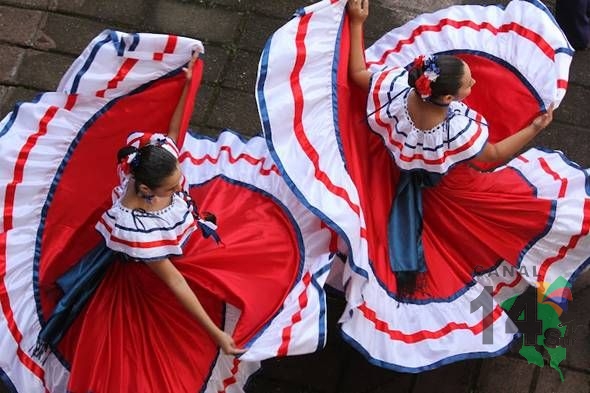
6. Symbolism and Historical Memory
6.1 How the Memory of the Annexation is Kept Alive
The Annexation of Guanacaste is not just an annual commemorative event; it is also kept alive in the collective memory of Costa Rica through various forms of symbolism and historical preservation. This event has left an indelible mark on national identity and is celebrated and remembered in multiple ways:
- Education and Culture
- In Costa Rican schools, the history of the Annexation of Guanacaste is part of the educational curriculum. Students learn about the importance of the event, the reasons behind the annexation, and its consequences, fostering knowledge and pride in this historical event.
- Additionally, cultural activities such as history contests, theatrical plays, and school presentations are organized, allowing young people to explore and represent this crucial event in Costa Rica’s history.
- Media
- The media plays a vital role in keeping the memory of the annexation alive. Every year, around July 25th, articles, reports, and special programs are published that revisit the history of the annexation, highlight its importance, and celebrate the current festivities.
- Social media has also become an important platform for sharing stories, photographs, and videos of the celebrations, connecting Costa Ricans from all over the world and keeping the relevance of the event alive.
- Events and Festivities
- The annual festivities of July 25th, as mentioned earlier, are a living manifestation of the historical memory of the Annexation of Guanacaste. These celebrations not only commemorate the historical event but also promote social cohesion and the preservation of the region’s cultural traditions.
- Cultural Organizations and Projects
- Various cultural and governmental organizations work to preserve and promote the history and culture of Guanacaste. These projects include the restoration of historical buildings, the organization of cultural events, and the promotion of historical research.
- These initiatives help keep the memory of the annexation fresh and relevant, ensuring that future generations understand and value its significance.
6.2 Monuments and Relevant Historical Sites
- Santa Rosa National Park
- Although it is best known for its role in defending against William Walker and his filibusters, Santa Rosa National Park is also a symbol of Costa Rica’s resilience and struggle for sovereignty. It represents the defense of the homeland and territorial integrity, values that are also reflected in the Annexation of Guanacaste.
- Monument to the Annexation of the Party of Nicoya
- In the city of Nicoya, there is a monument dedicated to the Annexation of the Party of Nicoya. This monument is a tangible reminder of the event and serves as a site for ceremonies and civic acts during the July 25th celebrations.
- The monument symbolizes the voluntary act of the Guanacastecans to join Costa Rica and is an important landmark for the local community and visitors.
- Guanacaste Museum in Liberia
- The Guanacaste Museum, located in the city of Liberia, offers exhibitions and educational resources about the history and culture of Guanacaste, including the annexation. This museum is a vital resource for those who wish to learn more about the region’s rich history and its integration into Costa Rica.
- The exhibits include artifacts, documents, and oral histories that provide a deep and nuanced view of the annexation process and its impact.
- Casa de la Cultura in Nicoya
- The Casa de la Cultura in Nicoya is another important site where cultural events are held, and the region’s history is promoted. Exhibitions, workshops, and presentations are conducted here, highlighting the importance of the Annexation of Guanacaste and its cultural legacy.
- This cultural space is essential for keeping the traditions and historical memory of the annexation alive, offering a place for community gathering and learning.
These monuments and historical sites are tangible witnesses to the Annexation of Guanacaste and play a crucial role in preserving its memory. Through them, and the various ways history is kept alive, Costa Rica honors and celebrates this fundamental event, always remembering the motto “From the homeland by our own will.”
The Annexation of Guanacaste is a historical event of great significance for Costa Rica, not only for its territorial impact but also for its economic, social, and cultural implications. The voluntary decision of the people of Nicoya, Santa Cruz, and Liberia to join Costa Rica has left a lasting legacy that is reflected in the country’s cultural richness and diversity. The integration of Guanacaste has strengthened Costa Rican national identity, enriching the culture with unique traditions and promoting economic development through agriculture, livestock, and tourism.
The annual celebration on July 25th is a vibrant reminder of shared history and the democratic and self-determination values that underpinned the annexation. The phrase “From the homeland by our own will” encapsulates the spirit of unity and the free and conscious decision of the Guanacastecans to become part of Costa Rica—an act of popular sovereignty that remains an example of self-determination and democracy in the region.
6.3 Reflection on the Meaning of the Phrase “From the Homeland by Our Own Will”
The phrase “From the homeland by our own will” has a deep and lasting meaning. It reflects the sovereign and voluntary decision of the inhabitants of Guanacaste to join Costa Rica, an act guided by a desire to improve their future and find stability and prosperity under a more stable government. This expression of popular will is a testament to the strength of democracy and the importance of the people’s consent in the formation of nations.
The phrase also symbolizes the peaceful and respectful integration of diverse cultures and traditions, demonstrating that unity and collaboration can lead to mutual enrichment and the strengthening of national identity. In a world where borders and divisions are often sources of conflict, the Annexation of Guanacaste serves as a reminder that unity and cooperation, based on mutual respect and consent, can be a powerful source of prosperity and harmony.

7. Sources and References
Bibliography and Additional Resources for Further Study
- Fernández, Jorge. History of Costa Rica. Editorial Costa Rica, 1995.
A comprehensive resource covering Costa Rica’s history from pre-Columbian times to the present, with a detailed focus on key events such as the Annexation of Guanacaste. - Vargas, Carlos Manuel. Guanacaste: History and Culture. EUNED, 2002.
This book offers an in-depth look at the history and culture of Guanacaste, including the process and consequences of the annexation. - Salazar, Víctor Hugo. The Annexation of the Party of Nicoya to Costa Rica. Editorial Universidad Estatal a Distancia, 1984.
A detailed study of the annexation process, its motivations, and its effects on the region and the country. - Ministry of Culture and Youth of Costa Rica. “Celebration of the Annexation of the Party of Nicoya.”
Online resources available on the Ministry’s website that describe the festivities and the cultural significance of the Annexation of Guanacaste. - National Archives of Costa Rica.
Historical documents and decrees related to the Annexation of Guanacaste, available for consultation both online and in physical archives. - Guanacaste Museum, Liberia.
Exhibitions and educational resources on the history of Guanacaste and its annexation to Costa Rica.
These sources and references provide a solid foundation for a deeper understanding of the Annexation of Guanacaste, its historical context, and its lasting legacy in Costa Rica’s culture and identity.











